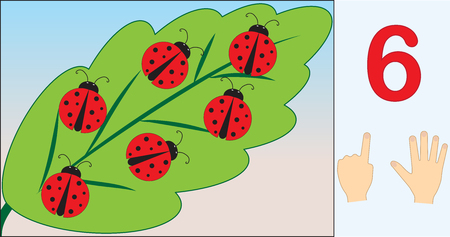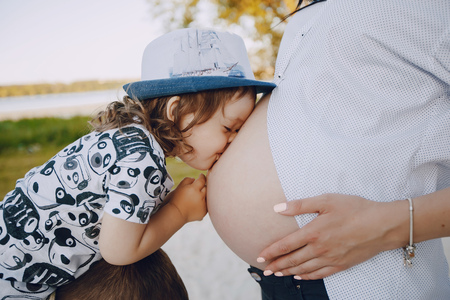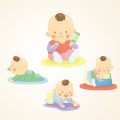Understanding Outdoor Allergies in Babies
When it comes to outdoor allergies, our little ones can be especially sensitive. Common outdoor allergens—like pollen from trees, grasses, and weeds, as well as mold spores—are everywhere, especially during certain seasons. While these allergens can make any of us feel miserable, babies are more vulnerable than adults because their immune systems are still developing. This means that even a small amount of pollen or mold in the air can trigger symptoms in infants faster and with more intensity than in older kids or grown-ups. As a parent, it’s important to understand how these invisible irritants work and why they often hit our babies harder. Being aware of what causes those sneezes, runny noses, or itchy eyes is the first step toward keeping your baby comfortable and safe outdoors.
Recognizing Allergy Symptoms in Your Baby
As a dad, I know how tough it can be to figure out whats bothering your little one, especially when theyre too young to tell you. When it comes to outdoor allergies, spotting the signs early is key. Babies react differently than older kids or adults, so its important to pay close attention to changes in their behavior or appearance. Allergies are common during high pollen seasons, like spring and fall, and knowing what symptoms to look for can help you protect your baby from discomfort.
Key Signs of Outdoor Allergies
Some of the most common allergy symptoms in babies include:
| Symptom | What It Looks Like |
|---|---|
| Sneezing | Frequent sneezing without any obvious illness |
| Watery Eyes | Eyes that look glassy or have tears even when your baby isn’t crying |
| Runny Nose | Clear, watery nasal discharge (not thick and yellow/green) |
| Irritability | Your baby seems fussier than usual, especially after being outdoors |
| Coughing | A dry cough that doesn’t seem connected to eating or sleeping positions |
Allergies vs. Colds: How to Tell the Difference
It can be tricky to distinguish between a simple cold and allergies since both can cause similar symptoms like a runny nose or sneezing. However, there are some clues that can help:
| Outdoor Allergies | Colds | |
|---|---|---|
| Nasal Discharge | Usually clear and watery | Often thick and yellow/green as it progresses |
| Fever | Rare with allergies | Common with colds |
| Itchy Eyes/Nose | Very common with allergies | Not typical with colds |
| Duration | Symptoms last as long as exposure continues; may go on for weeks during pollen season | Usually resolves within a week to ten days |
If You’re Unsure, Reach Out to Your Pediatrician
If youre ever unsure about whether your babys symptoms are due to allergies or a cold, don’t hesitate to check in with your pediatrician. They can offer guidance specific to your child’s situation and help you decide on the next steps for comfort and care.

3. Timing Outdoor Activities Safely
When it comes to protecting your baby from outdoor allergies, timing really is everything. The air outside isn’t always friendly to little noses, especially during peak allergy seasons. Here are some dad-tested tips for choosing the safest times and places to get fresh air with your baby while keeping those sniffles at bay.
Check Local Pollen Counts Before Heading Out
Before you step out for a walk or playtime in the park, take a minute to check your local pollen forecast. Most weather apps and websites offer daily pollen count updates specific to your area. In the U.S., spring and fall are often the worst for pollen, but this can vary depending on where you live. Try to plan your outings when pollen counts are low—usually after a good rain or later in the afternoon.
Avoid Peak Allergy Hours
Pollen levels tend to spike between 5 a.m. and 10 a.m., so if possible, wait until later in the day to go outside. If you’re an early riser like me, it’s tough to wait, but trust me—your baby’s comfort is worth it!
Pick Your Spots Wisely
Some places have more allergens than others. Parks with lots of grass, trees, or blooming flowers can be beautiful but might not be ideal during high-pollen days. Consider paved trails, urban playgrounds, or even your own backyard (if you can keep it maintained) as safer alternatives when pollen is high.
Pay Attention to Weather Conditions
Windy days may stir up pollen and other irritants, making them float around at nose level—which is right where babies breathe! On the flip side, rainy or cooler days usually mean less pollen in the air and can make for a more comfortable outing.
Trust Your Parental Instincts
No one knows your baby like you do. If they start rubbing their eyes or sneezing outdoors, it might be best to head back inside and try again later. With a bit of planning and the right timing, you can enjoy the benefits of fresh air without letting allergies ruin your family fun.
4. Dressing and Protecting Your Baby
As a dad, I know how tempting it is to let your little one soak up the sunshine outside. But when it comes to outdoor allergies, what your baby wears and how you gear up for outings can make a big difference in keeping those pesky pollens and irritants at bay. Here’s some practical advice that’s worked for us:
Choosing the Right Clothing
Dressing your baby in lightweight, long-sleeved shirts and pants creates a physical barrier between their delicate skin and airborne allergens. Opt for breathable fabrics like cotton so your baby doesn’t overheat. Hats with wide brims not only provide sun protection but also help shield hair and face from pollen.
Clothing Tips Table
| Clothing Item | Recommended Material | Allergy Protection Benefit |
|---|---|---|
| Long-sleeve shirt | Cotton | Covers arms, reduces skin exposure |
| Pants/leggings | Cotton or bamboo | Shields legs from contact with grass & pollen |
| Sun hat | Cotton blend, wide-brimmed | Keeps pollen off scalp & face |
Stroller Covers and Gear
A stroller cover is a game changer. Look for mesh covers specifically designed to block out pollen and dust while still allowing airflow—these are easy to find online or at most baby stores. Always check that your cover fits securely around the stroller to avoid gaps where allergens can sneak in.
Other Handy Protective Gear:
- Baby sunglasses: Help keep pollen out of sensitive eyes.
- Lightweight blankets: Use as an extra layer over your child’s lap or feet if you’re walking through grassy areas.
Tips for Outings
- Wipe down any exposed skin with fragrance-free wipes after coming indoors.
- Change your baby’s clothes as soon as you get home to remove any clinging allergens.
The right clothing and protective gear can go a long way toward making outdoor adventures safer for your baby during allergy season—and give you peace of mind as a parent.
5. Keeping Your Home Allergen-Free
If your little one suffers from outdoor allergies, keeping your home as allergen-free as possible is a must. Even though you can’t control what’s happening outside, you do have some power over your indoor environment. Here are some practical dad-approved guidelines to help keep pollen and other irritants at bay inside your house.
Use Air Purifiers
Invest in a high-quality air purifier with a HEPA filter for the rooms where your baby spends most of their time, especially the nursery and living room. These devices work wonders by trapping pollen, dust, and even pet dander that might sneak in from outdoors. Remember to change the filters regularly so they keep doing their job.
Change Clothes After Outdoor Time
It’s amazing how much pollen can hitch a ride on clothes and hair after spending time outside. Make it a habit for everyone—especially whoever’s been carrying or playing with the baby—to change into fresh clothes when coming back indoors. Toss outdoor outfits straight into the laundry and give hands (and faces!) a quick wash to minimize bringing irritants inside.
Establish Regular Cleaning Routines
Keeping up with cleaning may not be glamorous, but it pays off big-time when it comes to allergies. Vacuum floors and furniture frequently using a vacuum cleaner with a HEPA filter. Mop hard surfaces and wipe down windowsills where pollen tends to collect. Don’t forget to wash bedding, curtains, and soft toys in hot water every week to get rid of any lingering allergens.
Additional Dad Tips for an Allergen-Free Home
- Keep windows closed during high pollen seasons—even if that spring breeze feels nice.
- Bathe pets regularly if they go outside; they’re like furry pollen magnets.
- Consider using hypoallergenic covers for mattresses and pillows in your baby’s room.
Bottom Line
With just a few tweaks to your daily routine, you can make your home a safe haven from outdoor allergens. It might take a little extra effort, but seeing your baby breathe easier is worth every minute spent on these simple steps.
6. When to Contact Your Pediatrician
As a parent, it’s natural to worry when your baby is dealing with outdoor allergies, but sometimes it can be tough to know when symptoms are serious enough to reach out to your pediatrician. Mild allergy symptoms like a runny nose, mild sneezing, or watery eyes can often be managed at home with some of the prevention steps we’ve discussed. However, if you notice your baby is struggling to breathe, wheezing, has hives or swelling on their face, lips, or tongue, or develops a high fever that doesn’t go away—these are signs you should call your doctor right away or head to urgent care. Also, if allergy symptoms last for more than two weeks or seem to get worse instead of better despite your efforts, that’s another good reason to contact your pediatrician.
When Allergies Disrupt Daily Life
If allergies are affecting your babys sleep, eating habits, or mood, it’s time for professional advice. Babies can’t tell us exactly how they’re feeling, so changes in their usual behavior are important clues. Your pediatrician may want to rule out other conditions that look similar to allergies—like colds or sinus infections—and can help come up with a plan tailored for your child.
Discussing Allergy Testing and Treatments
If your baby’s symptoms continue over several seasons or become severe, your pediatrician might recommend seeing an allergist for further evaluation. Allergy testing (usually skin or blood tests) is rarely done for very young babies but could be considered if symptoms are persistent and the cause isn’t clear. Treatment options will always focus on safety first for infants; sometimes this means prescription medications in addition to environmental changes at home and outside.
Your Pediatrician Is Your Partner
Remember, you don’t have to figure this all out alone. It’s always okay to call your doctor with questions about allergy symptoms—even if you just need reassurance. Keeping open communication with your pediatrician helps you feel confident you’re doing everything possible to keep your little one healthy and comfortable during allergy season.


